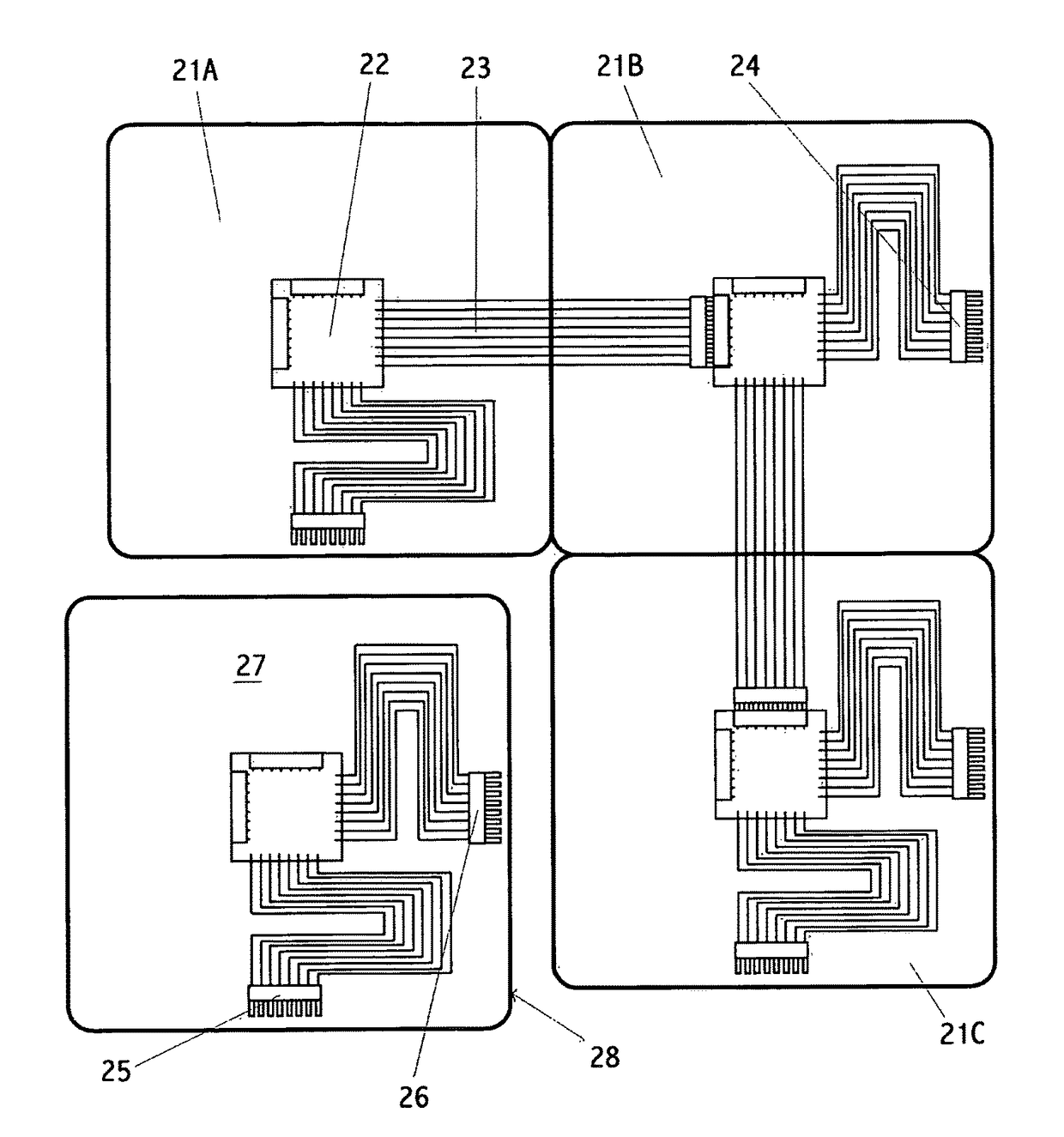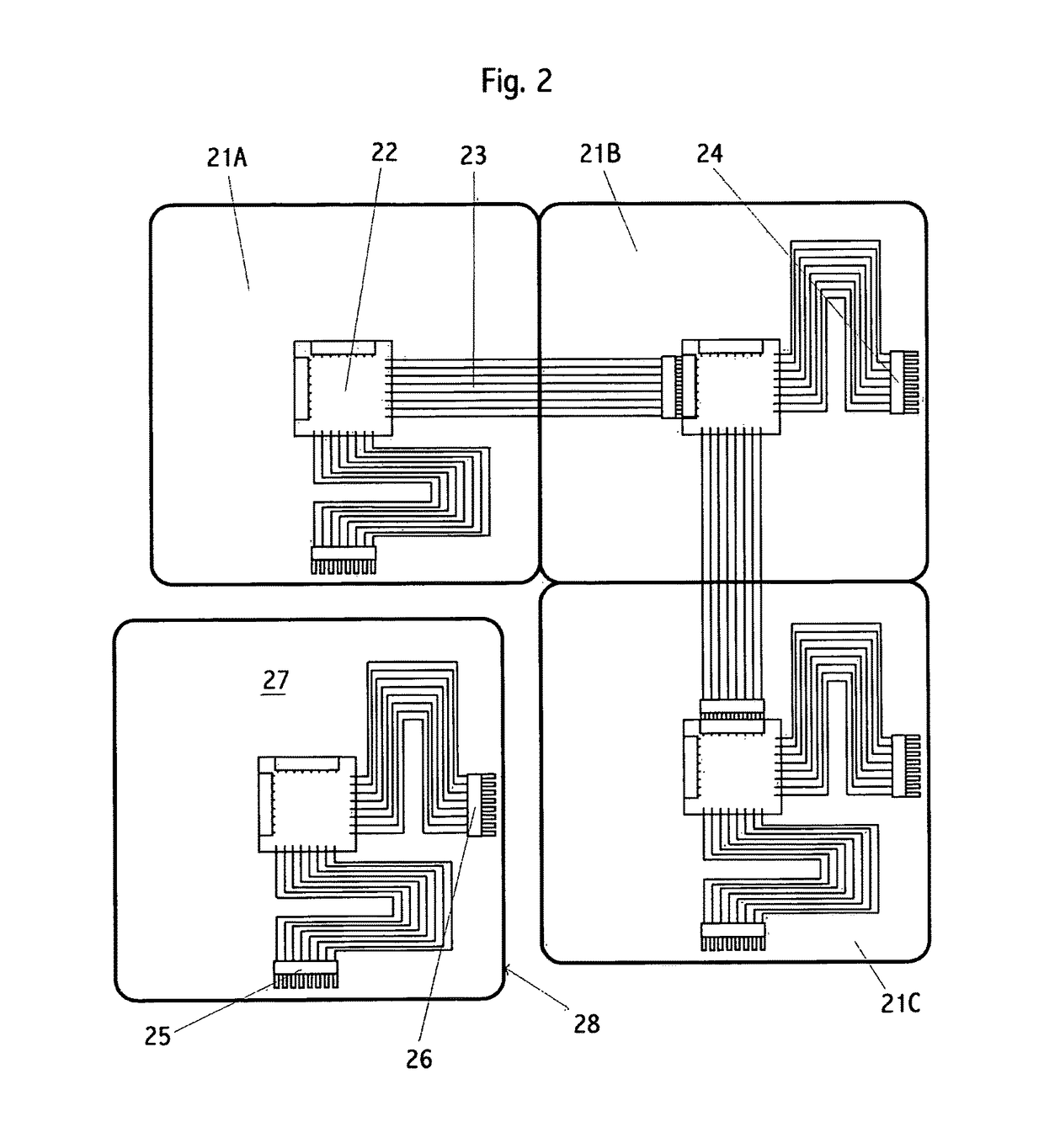Seamless illuminated panel
a technology of illuminated panels and modules, applied in fixed installations, lighting and heating apparatuses, instruments, etc., can solve the problems of high cost, high weight, high cost, and high cost of units, and achieve the effect of reasonable cost and easy assembly
- Summary
- Abstract
- Description
- Claims
- Application Information
AI Technical Summary
Benefits of technology
Problems solved by technology
Method used
Image
Examples
embodiments
[0240]Various embodiments include:[0241]101. A tile for the purpose of providing illumination comprising:[0242]a plurality of illumination devices configured to provide colored light of different hues and brightnesses;[0243]a processor operatively connected to the illumination devices;[0244]a one or more communication interfaces operatively connected to the processor configured to connect to a plurality of similar tiles;[0245]wherein each tile edge is configured to optionally mate to a tile edge of an adjacent tile;[0246]wherein the processor is configured to receive over one or more of its communication interfaces hue and brightness commands.[0247]102. The tile of embodiment 101 wherein:[0248]the tile is rectangular.[0249]103. The tile of embodiment 101 wherein:[0250]the number of communication interfaces is three or more.[0251]104. The tile of embodiment 101 wherein:[0252]the processor controls the brightness and hue of each illumination device separately.[0253]105. The tile of em...
PUM
 Login to View More
Login to View More Abstract
Description
Claims
Application Information
 Login to View More
Login to View More - R&D
- Intellectual Property
- Life Sciences
- Materials
- Tech Scout
- Unparalleled Data Quality
- Higher Quality Content
- 60% Fewer Hallucinations
Browse by: Latest US Patents, China's latest patents, Technical Efficacy Thesaurus, Application Domain, Technology Topic, Popular Technical Reports.
© 2025 PatSnap. All rights reserved.Legal|Privacy policy|Modern Slavery Act Transparency Statement|Sitemap|About US| Contact US: help@patsnap.com



